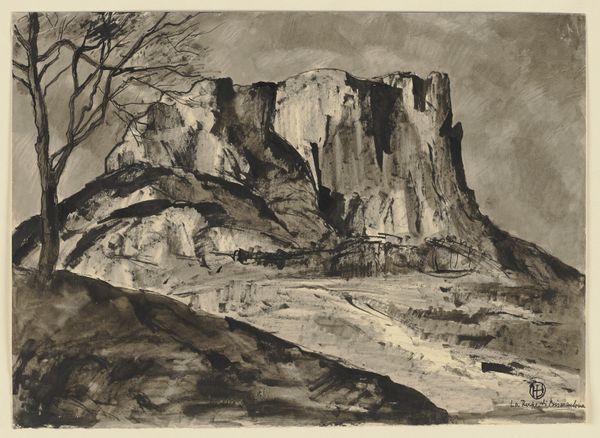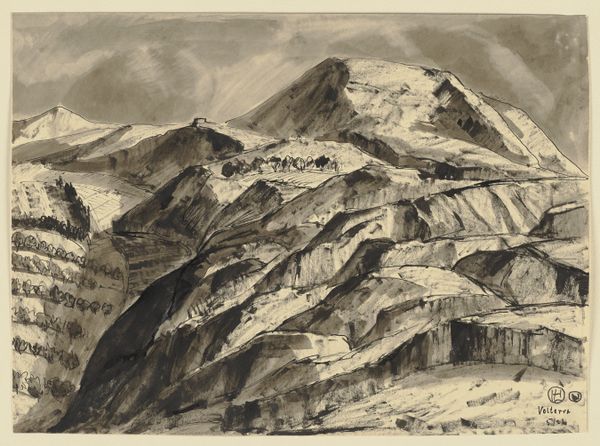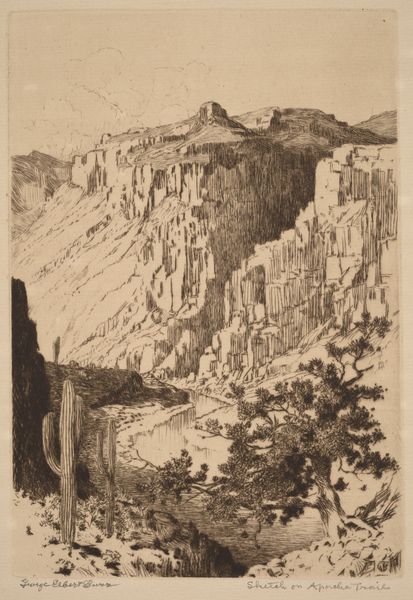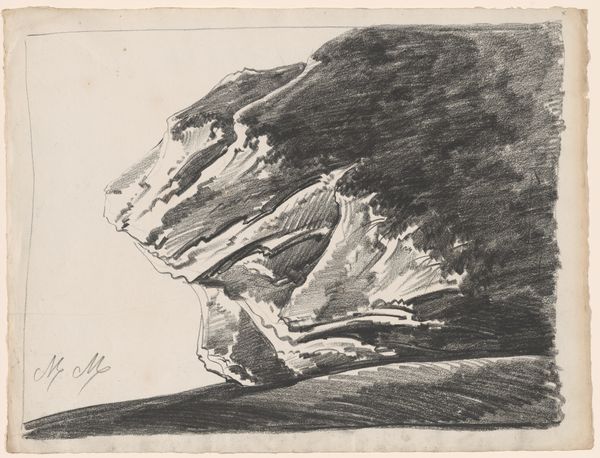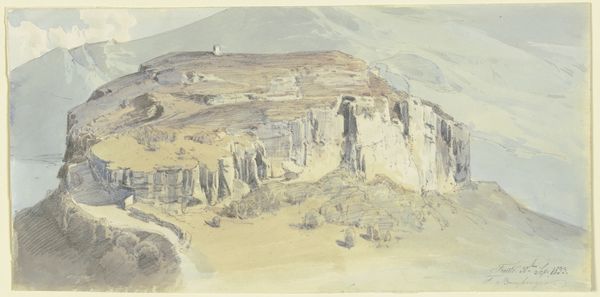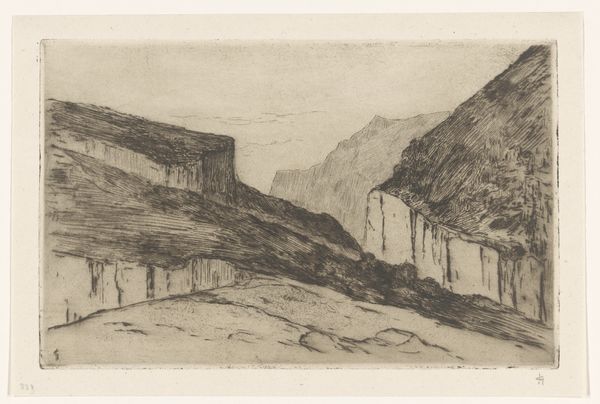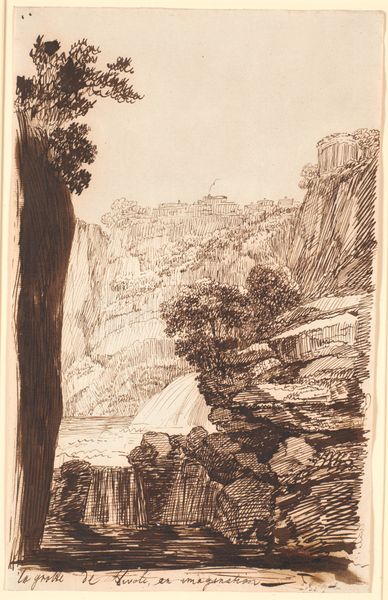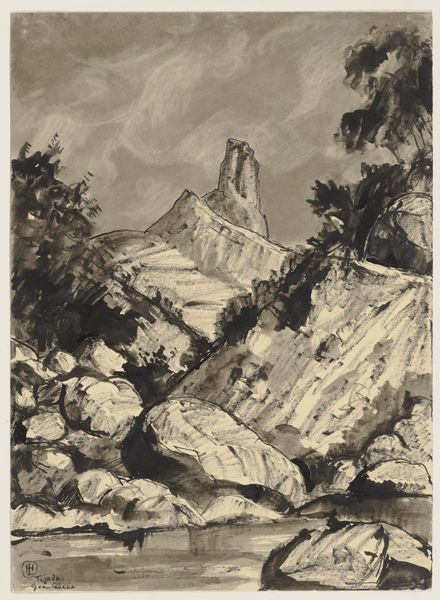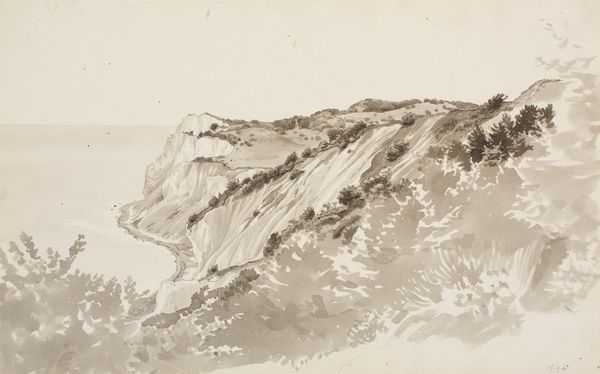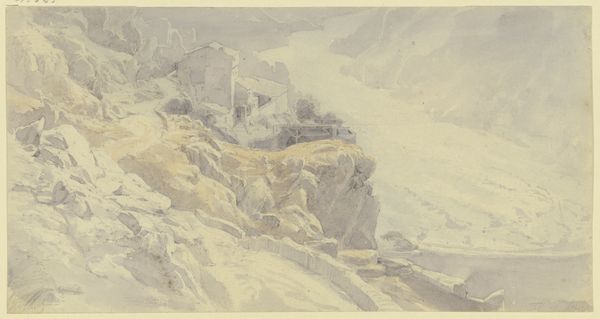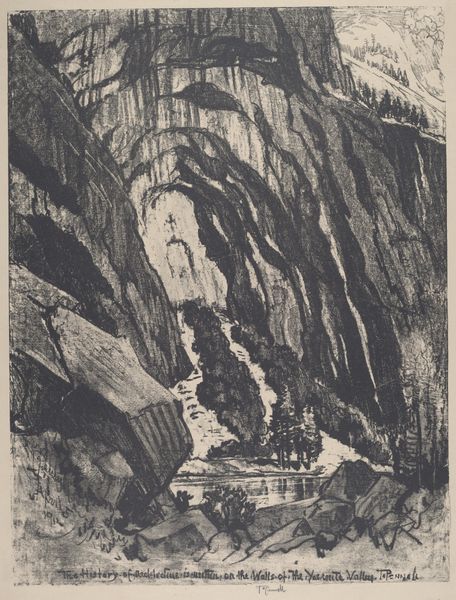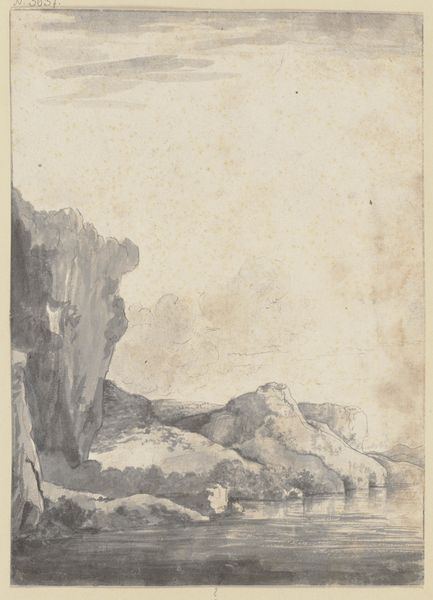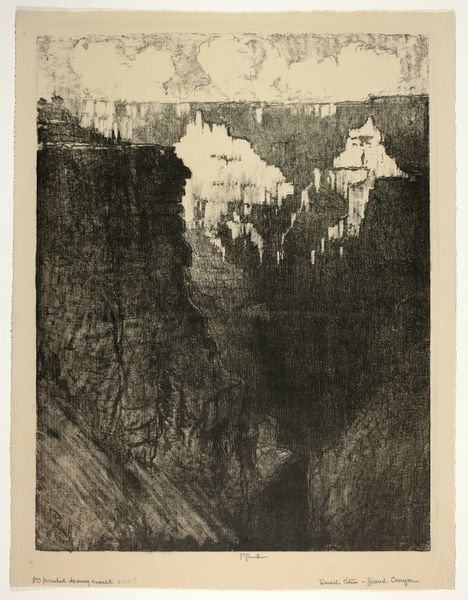
drawing, paper, dry-media, ink
#
drawing
#
landscape
#
paper
#
dry-media
#
ink
Copyright: Public Domain
Editor: Here we have "Le Balze, Volterra," a drawing by Hermann Lismann from around 1923. It's done in ink on paper, and the contrast is just striking. The cliffs are looming and dramatic, almost threatening. How do you interpret the feeling evoked by this landscape? Curator: I see it as a visual statement about power and vulnerability. Lismann positions us, the viewers, at the base of these eroding cliffs. This choice isn't just about aesthetics. How does the crumbling landscape mirror broader societal anxieties of the 1920s, following the first World War? Editor: So you are suggesting that the physical degradation of the landscape might reflect the social or political instability of that time? Curator: Precisely. Consider how land has historically been linked to power and stability. The visible erosion, rendered in stark ink, presents a powerful visual metaphor for a world in flux. Does this then influence our perception of the structures precariously perched atop those cliffs? Editor: I hadn’t thought about it that way. It does make you wonder if those buildings will eventually fall as well. It goes beyond just being a pretty picture then. Curator: Exactly. Lismann prompts us to consider the political and social dimensions embedded within what seems like a simple landscape. The "pretty picture" serves as a visual document reflecting its tumultuous era. Editor: It’s amazing how a drawing can reveal so much about its historical context. I’ll never look at landscapes the same way again. Curator: That's the beauty of engaging with art; it opens doors to understanding history in profoundly visual and visceral ways.
Comments
No comments
Be the first to comment and join the conversation on the ultimate creative platform.
